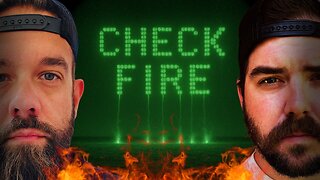Premium Only Content

Saturday Zoom: BCI: Brain-Computer Interface
Every neural-prosthetics lab has its own brain-decoding algorithm, but could one size fit all?
Earlier this year in a lab at Duke University, in Durham, N.C., a clever, raisin-gobbling monkey named Idoya made a robot move in Japan—just by thinking. And she wasn’t alone. She joined ranks with, among others, a paraplegic man who recently used his brain to move a cursor around a computer screen.
Researchers have endowed subjects with seemingly telekinetic powers by extracting the patterns of brain activity that occur when we move parts of our bodies. However, those patterns are tapped electronically, algorithms are needed to interpret them and discern their salient features so that the appropriate signals can be sent to external devices. Groups working on brain-machine interfaces have designed brain decoders differently, depending on the type of neural data they collect and the purposes of their research. As a result, most algorithms have to be written from the ground up. But some in the field say it’s time to develop a generic algorithm that will incorporate the best work of the last decade and serve as a foundation for all labs working on neural prosthetics.
The early 2000s saw the advent of optogenetics, a groundbreaking technique that allows scientists to stimulate or inhibit neural activity with beams of light instead of invasive electrodes. That led to even more advances in neurobiology; for example, by activating certain neurons or neural circuits in mice, researchers have been able to treat stroke or enhance or remove certain memories.
Now a trio of scientists at UC Berkeley are taking brain–machine interfaces to a new level, with a powerful platform that incorporates optogenetics and computer-generated holography in a way that shows promise as a high-throughput, high-precision technique for communication with the brain. The scientists believe it could become a powerful research tool for understanding how the brain is wired and could eventually be used to design therapies to treat brain diseases and disorders rooted in the malfunction of neural circuits.
This system draws on the collective expertise of Laura Waller, an expert in computational imaging; Rikky Muller, whose lab focuses on microelectronics for neural interfaces; and Hillel Adesnik, a professor of neurobiology who studies the neural basis of perception. Waller and Adesnik are Chan Zuckerberg Biohub San Francisco Investigators, and overlapped with Muller, who is now an alum of the Biohub Investigator Program.
History of Cory Hall UC Berkeley:
Named for Clarence L. Cory, dean of the College of Mechanics and a faculty member for almost 40 years, Cory had a fifth floor added in 1985, the exterior of which features a computer chip-inspired design motif. The building houses a state-of-the-art electronic micro-fabrication facility and labs devoted to integrated circuits, lasers, and robotics. Cory has the dubious distinction of being the only site bombed twice by “Unabomber” Theodore Kaczynski in the 1980s.
-
 8:12
8:12
Rehypothecation1
2 days agoPeter Gunn Audio of 2,496 Juxtaposition1 Podcasts
3553 -

FreshandFit
12 hours agoLas Vegas Takeover!
181K15 -
 2:19:29
2:19:29
Badlands Media
12 hours agoDevolution Power Hour Ep. 404
66.8K36 -
 6:02:58
6:02:58
Drew Hernandez
1 day agoGOP COOKED INTO DENIAL & 12 ISRAELI-LINKED PHONES DETECTED AT UVU DAY OF CK EXECUTION?
46.1K24 -
 2:46:08
2:46:08
TimcastIRL
8 hours agoFAA To STOP Flights Over Shutdown, May CLOSE Airspace, Thanksgiving Travel APOCALYPSE | Timcast IRL
193K113 -
 1:56:20
1:56:20
Tucker Carlson
8 hours agoIt’s Time to Decide: America First or Lindsey Graham’s Psychosexual Death Cult?
108K406 -
 9:07:39
9:07:39
SpartakusLIVE
10 hours agoBattlefield 6 - REDSEC || ARC Raiders Later? || Anybody Want Warzone???
74.9K5 -
 3:56:11
3:56:11
Alex Zedra
7 hours agoLIVE! Spooky Games tn
52.3K4 -
 2:58:21
2:58:21
I_Came_With_Fire_Podcast
18 hours agoThe Normalization of Political Violence | Right Wing In-Fighting | China Chooses China
37.2K11 -
 2:37:06
2:37:06
PandaSub2000
13 hours agoLIVE 10:30pm ET | BUZZ TRIVIA with Chat!
39.2K5